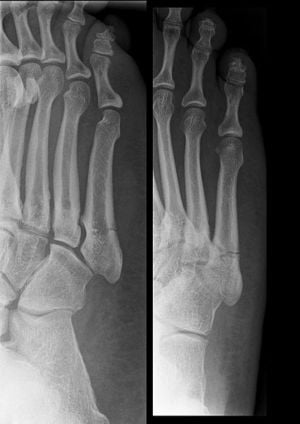Osteoporosis is a disease which is characterized by a decrease in bone mass and structural deterioration. (“Causes of Osteoporosis, Symptoms of Osteoporosis and Treatment”) It is frequently described as a silent disease, since often a patient has no symptoms until the disease is well progressed. When you have Osteoporosis, your bones become fragile and easily breakable, so fragile that even a sneeze can trigger a fracture! Women are four more times likely to develop osteoporosis, but men can suffer from this disease as well. (“Osteoporosis: What Is It?”) Knowing the signs and symptoms of Osteoporosis can lead to early diagnosis and treatment, important because while treatments exist for Osteoporosis, there is no cure. Osteoporosis can be present for years without any symptoms, and you may not be aware you have this condition until you actually break a bone (or several).
There are two types of osteoporosis, primary and secondary. Primary Osteoporosis occurs spontaneously, while secondary Osteoporosis is brought on by another disorder or a drug. (“Osteoporosis: Bone, Joint and Muscle Disorders”) The five most common symptoms of Osteoporosis are back pain, neck pain, loss of height, fractures and swelling and joint pain. I have included a brief summary of each of these symptoms below. If you have any of the following Osteoporosis symptoms, please consider discussing them with your doctor, as this article does not constitute or replace medical advice.
Back Pain. This can be caused by repeated fractures of the spine or vertebrae. Back pain may start out as dull, and become a sharp pain that comes on suddenly. (“Osteoporosis Causes, Symptoms, Diagnosis, Treatment and Prevention). The pain can come in a variation of ways: it may come and go, may linger for months or subside in less than a week, and may radiate to other areas of the body (Id.)
Loss of Height. This occurs when the vertebrae in your spine begin to collapse, leading to a stooped posture called kyphosis or “dowager’s hump”. (“Signs and Symptoms of Osteoporosis”) Dowager’s humps are often caused by “wedge” fractures, which occur when the front of a vertebra collapses, causing the vertebrae to tip forward. Often these wedge fractures are silent, meaning they do not cause any pain when they occur. (“Osteoporosis Can Lead to Dowager’s Humps”) Your first sign of this symptom may simply be that you have begun to stoop forward when sitting or standing.
Fracture of the Vertebrae, Wrists, Hips or Other Bones. These fractures frequently occur after a minor incident, such as stepping off a curb or bending over. (“Signs and Symptoms of Osteoporosis”) Fractures of the spine can also result in loss of height (see above.) People with Osteoporosis can develop stress fractures in their feet from simply walking! (Osteoporosis Symptoms, Treatment, Information, Risk Factors, Causes, Prevention and Diagnosis) Hip fractures usually result after a fall, and can be slow to heal. (Id.)
Swelling and Joint Pain. Pain and swelling in your joints caused by osteoporosis can be confused with arthritis; subsequently, some people may ignore this type of pain. In reality, it is a symptom of a different disease entirely. If you are suffering from swollen joints or have pain in your joints, unless you have been diagnosed with arthritis please do not ignore this symptom.
Periodontal Disease. Some studies have indicated that tooth loss and periodontal disease may be a symptom of Osteoporosis. Researchers at the University of Buffalo also reported that people diagnosed with periodontal disease may be at a higher risk of Osteoporosis. (“Gum Disease and Osteoporosis”) This study demonstrated that if you have osteoporosis you are at an 86% greater risk of having gum disease, and also that periodontal disease in postmenopausal women may indicate osteoporosis. (Id.) If you have recently been diagnosed with periodontal disease, and feel you are at risk for Osteoporosis, please discuss this symptom with your doctor.
Osteoporosis can be diagnosed by a doctor using a bone density test. If you have any or all of the above symptoms, please consult your doctor. Once you are diagnosed, you can begin your treatment plan.
Source List:
Peter Hutch, Causes of Osteoporosis, Symptoms of Osteoporosis and Treatment
http://www.articlesbase.com/diseases-and-conditions-articles/causes-of-osteoporosis-symptoms-of-osteoporosis-and-treatment-623605.html
www.articlesbase.com, No author listed
NOF – What is Osteoporosis www.nof.org/osteoporosis/index.htm
www.nof.org, No author listed
Osteoporosis: Bone, Joint and Muscle Disorders www.merck.com/mmhe/sec05/ch060/ch060a.html
www.merck.com, No author listed
Osteoporosis Causes, Symptoms, Diagnosis, Treatment and Prevention. www.emedicinehealth.com/osteoporosis/page3_em.htm
www.emedicinehealth.com
Osteoporosis Can Lead to Dowagers Humps www.osteopenia3.com/dowagers-humps.html
www.osteopenia3.com, No author listed
Signs and Symptoms of Osteoporosis http://bone-muscle.health-cares.net/osteoporosis-symptoms.php
Site Title: www.bone-muscis.health-cares.net, William C. Shiel Jr., MD, FACP, FACR
Osteoporosis Symptoms, Treatment, Information, Risk Factors, Causes, Prevention and Diagnosis www.medicinenet.com/osteoporosis/article.htm
www.medicinenet.com, No author listed
Gum Disease & Osteoporosis. www.dentalwellness4u.com/dentaldisease/osteoporosis.html
www.dentalwellness4u.com




